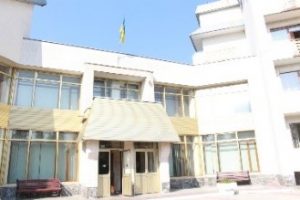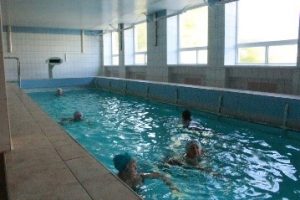
BLOG
Report on Ukraine Support Activities
From the 15th to the 20th of September, we visited Ukraine and toured various medical facilities, a sanatorium built for those who were affected by the Chernobyl disaster, and the homes of Ukrainians still living in radioactive areas. Unlike our usual visits, this time our focus was on investigating and gathering data. We visited three locations: Zhytomyr, Ovruch, and Narodychi. We have often visited Zhytomyr and Ovruch as there are facilities we support in these districts, but it was our first time visiting Narodychi. We believe the trip was very productive, as we had the opportunity to conduct interviews and observe the lives of local people. Like last year, we gathered the children who had participated in the Ukraine & Fukushima Children’s Exchange Program to take part in a interview with the local press.
Below we would like to provide a short summary of our findings during the trip.
<Sanatorium>
We began by visiting two sanatoriums in suburban Kyiv and Zhytomyr. In Ukraine, hospitals are considered facilities for treatment while sanatoriums exist as facilities for rehabilitation. In the wake of the Chernobyl disaster, they have mainly served as places where liquidators (workers who dealt with the consequences of the Chernobyl accident) and children can recuperate. The facilities offer a variety of different programs treating issues related to blood pressure, headaches, obesity, and PTSD. In addition to prescription drugs, the sanatoriums use mud, herbs, and scented oils, thermotherapy, and water pressure massages as part of their treatment. The doctors also advise physical rehabilitation using the gym.

 Kapitanivka Sanitorium The sanatorium pool
Kapitanivka Sanitorium The sanatorium pool
The children at the sanatorium Patients exercising at the gym
While the government currently provides funding for the facilities’ medical, food, heating, electricity, and personnel costs, the funding still isn’t sufficient, leading the sanatoriums to rent out their event hall for public and private occasions. There is still need for more personnel and equipment.
Narodychi Raion is currently classified as part of the 2nd Chernobyl Exclusion Zone, where residency and work is restricted. Although there is no employment in the area outside of government-owned facilities, the district desires permission to build factories and other worksites in order to increase tax revenue. ちなみに、元々現地に住んでいる人は就労を認められていることや国が労働を制限しているにも関わらず、ナロジチ内にある病院や学校には国から予算が出ていることなど、矛盾を感じることも多かったです。
ナロジチの幼稚園の園庭と通う園児たち
ナロジチの学校と通う生徒たち
また、実際にナロジチ地区内の放射能は高くなく、関係者の話では現段階のナロジチを調査すれば「第3ゾーン」にグレードダウンする可能性が高いといいます。実際に私たちが測ったときも最大で0.27μSv/hでした。
「第3ゾーン」になれば政府にとっても保障を与える必要がなくなったり工場や企業の誘致を可能にして税収を増やしたりすることもできますが、「第2ゾーン」を「第3ゾーン」に改変するにはさまざまな調査が必要となり、経済的に余裕がないため実施できていません。よってナロジチは現在に至るまで「第2ゾーン」です。また、現地の住民も保障が受けられなくなるので現状維持を望む声が大きいです。
汚染地域のリッチマネ、ジェルバの2つの村にお邪魔しました。実際ジェルバにはもう人が住んでおらず、建物も全て荒れ果てた状況でした。リッチマネではチェルノブイリ事故前から現在に至るまでこの村に住み続けている6人にお話を伺いました。ほとんどが一人暮らしで、子どもや孫がいるが違う町に住んでいたり病気で亡くしたりしています。
話を聞かせてくれた住民の方々
汚染エリアに住む子どもたち。近くには学校も1つある
事故前は80世帯ほどの村でしたが、今は数えるほどの村民しか残っていません。村を出て行った人の中には避難先で「チェルノブイリ人」と呼ばれ、いじめられたと言いますが、一方で、事故後キエフなどの町から静かな暮らしを好んだり信仰心が篤かったりする人々が移住しています。住民は自給自足の生活をしており、放射能が蓄積されやすいと言われるキノコやベリーも口にしていますが長生きしている人も多く、お話を伺った方の半分は80代でした。逆に避難した元村民は既に皆亡くなってしまったと言います。彼らはもう一度同じ事故が起きたとしてもリッチマネに住み続けると答えました。「それにどこにいても放射能はある。キエフにだってある」「人は生まれた場所に住み続けるべき。何が起きても離れてはいけない」。そう考えています。
今回は時間の都合上訪れられませんでしたが、3㎞ほど離れたところにはたった2人だけの村があります。
―人が健康的に生き続けるには何が必要か、何を避けるべきか―。ウクライナでも福島でも問われ続ける課題の複雑さを改めて感じました。
自給自足でくらすバラノウスキ夫妻
家の中の様子
リッチマネとは違い、ジェルバには現在人は誰も住んでおらず廃墟や廃屋のみが残されている状態でした。町の中心にあったと思われる鮮やかな青色の教会、商店や学校、村役場が残されていたが木造の建物のため朽ちていたり内部には瓦礫の山が築かれたりしていました。役場で管理していた資料らしきメモ用紙やガスマスクなど人が暮らしていた気配が感じられるものもいくつか見つかった。ジェルバにはいつまで人が住んでいたかは定かではないが、道路沿いにチェルノブイリ原発事故で被害に遭った人の名前を記した慰霊碑があったため少なくとも事故直後には人の出入りがあったと考えられる。このエリアの放射能の値は最高値で0.5μS/vでした。
荒れ果てた元商店 今回の訪問で最高の0.5μ/Sv
放置されたガスマスク 元村役場から出てきた牛の売買に関する書類
2017年にスタートした、ウクライナの子どもたちを福島県に招待する「交流プログラム」について現地のマスコミ各社が取材してくださいました!
昨年日本に来たジトーミル第12学校の子どもたちと先月日本を訪れたオブルチ第3学校の生徒たちが集まり、テレビ、ラジオ、新聞の取材に対して日本の印象や学んだこと、ウクライナで生かしたい事などを話しました。
ジトーミル市内の放送局 ラジオの生放送出演
テレビ取材を受ける子どもたちとチェフコ職員
ジトーミル第12学校とオブルチ第3学校の生徒たちが顔を合わせるのは初めてでしたが、日本での経験やホームステイの思い出話に花を咲かせていました。
残念ながら全てウクライナ語で放映されたので直接理解はできませんが、チェフコの活動も紹介していただけたようです。